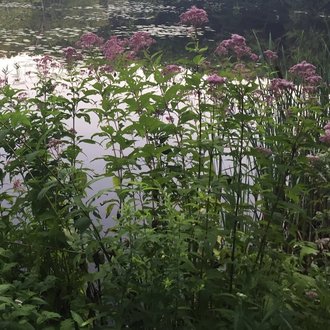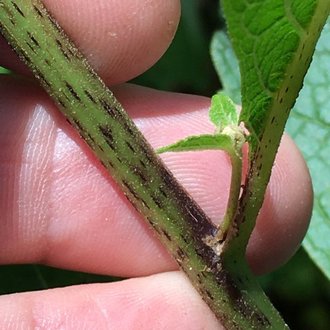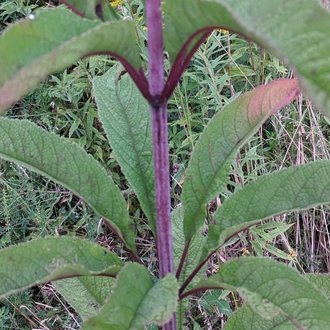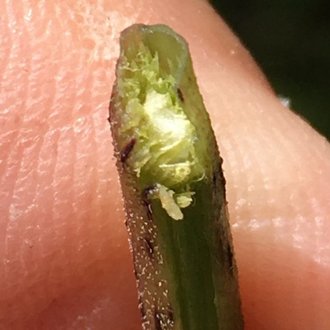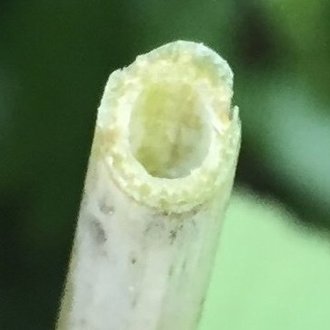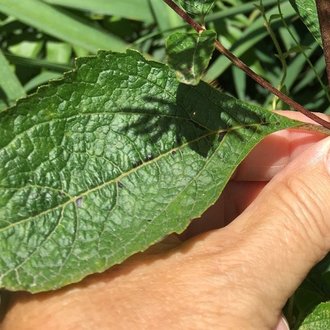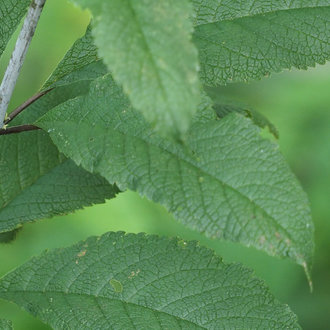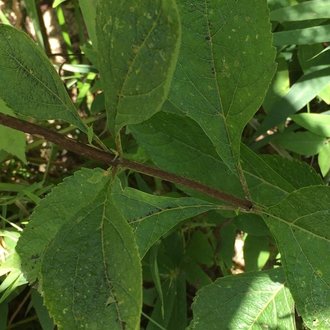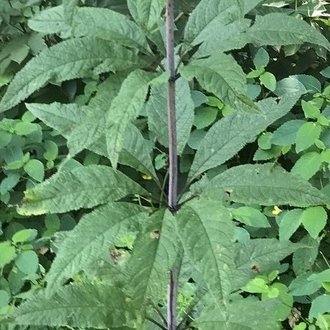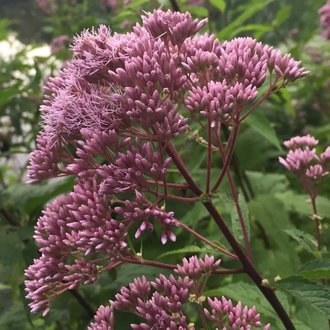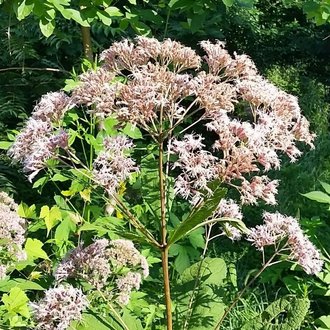Coastal Plain Joe Pye Weed vs Hollow Joe Pye Weed
These plants are sometimes confused where their ranges overlap in southern New England through the Mid-Atlantic. They are easily distinguished by their stems and leaf vein pattern, and often also by height or number of leaves per whorl. E. dubium is slightly more tolerant of shade and drier conditions, prefers less-disturbed habitats, and is limited to acidic soil, mostly near the coast. E. fistulosum requires more nutrient-rich soil and sun, favors more disturbed areas, and is more common farther inland.
Coastal Plain Joe Pye Weed (Eutrochium dubium) | Hollow Joe Pye Weed (Eutrochium fistulosum) |
A perennial of moist, sandy, acidic soils native to the coastal plain from New England south through South Carolina. | A tall perennial of moist, rich, disturbed sites, native to the eastern U.S.; the tallest Eutrochium. |
Much shorter, usually only to 4 feet, rarely to 5.5 feet in height. Photo © Matt Schenck, CC BY 4.0. | Averages much taller, commonly to 9 feet, rarely to 11. Photo © Nate Martineau, CC BY 4.0. |
Stem is purple-spotted against green background, with bold spotting remaining even at maturity. Stems are not glaucous. Photo © Becky, Public Domain. | New growth on stems often has faint spotting, but spotting not as pronounced and often absent on mature growth. Stem often purple throughout, usually glaucous (covered with pale, waxy coating.) Photo © Lydia B, CC BY 4.0. |
Stem is not hollow, filled with solid pith. Photo © Becky, Public Domain. | Stem is hollow, with large central cavity. Photo © Ken Kneidel, Public Domain. |
Leaves tend to have a triple-veined appearance, with two side-veins originating near the base tending to extend quite a ways towards the tip. Photo © Becky, Public Domain. | Leaves lack a triple-veined appearance; side veins near the leaf base are short and end near the leaf margin. Photo © mefisher, Public Domain. |
Leaves of mature plants are in whorls of 3-4. Seedlings initially have opposite leaves. Photo © Becky, Public Domain. | Leaves of mature plants are in whorls of 4-7, sometimes even 8. Seedlings initially have opposite leaves and young plants may have 3 leaves per whorl. Photo © Mason Heberling, CC BY 4.0. |
Inflorescences average darker purple. Photo © Matt Schenck, CC BY 4.0. | Inflorescences may be purple, but average lighter, and can be pink or closer to white in color. Photo © Baruch Tauber, Public Domain. |
References & External Resources
These short lists show only links helpful for ID. For a complete list of references and resources also covering other aspects of ecology, visit the links section of the full article on each plant, which is the first entry here.



